
A kayak is a small, narrow watercraft which is typically propelled by means of a double-bladed paddle. The word kayak originates from the Greenlandic word qajaq.
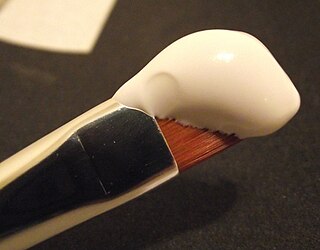
Gesso is a white paint mixture consisting of a binder mixed with chalk, gypsum, pigment, or any combination of these. It is used in artwork as a preparation for any number of substrates such as wood panels, canvas and sculpture as a base for paint and other materials that are applied over it.

Shellac is a resin secreted by the female lac bug, on trees in the forests of India and Thailand. It is processed and sold as dry flakes (pictured) and dissolved in alcohol to make liquid shellac, which is used as a brush-on colorant, food glaze and wood finish. Shellac functions as a tough natural primer, sanding sealant, tannin-blocker, odour-blocker, stain, and high-gloss varnish. Shellac was once used in electrical applications as it possesses good insulation qualities and it seals out moisture. Phonograph and 78 rpm gramophone records were made of it until they were replaced by vinyl long-playing records from the 1950s onwards.

A canoe is a lightweight narrow vessel, typically pointed at both ends and open on top, propelled by one or more seated or kneeling paddlers facing the direction of travel using a single-bladed paddle.

Ely is a city in Saint Louis County, Minnesota, United States. The population was 3,460 at the 2010 census. It is located on the Vermilion Iron Range, and is historically home to several iron ore mines.
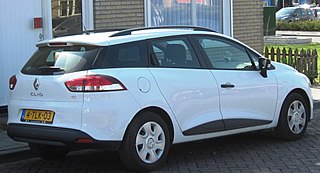
A station wagon, also called an estate car, estate or wagon, is a car body style which has a two-box design, a large cargo area and a rear tailgate that is hinged to open for access to the cargo area. The body style is similar to a hatchback car, but station wagons are longer and are more likely to have the roof-line extended to the rear of the vehicle body to provide ample space for luggage and small cargo.
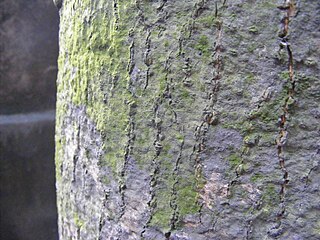
Bark is the outermost layers of stems and roots of woody plants. Plants with bark include trees, woody vines, and shrubs. Bark refers to all the tissues outside the vascular cambium and is a nontechnical term. It overlays the wood and consists of the inner bark and the outer bark. The inner bark, which in older stems is living tissue, includes the innermost area of the periderm. The outer bark in older stems includes the dead tissue on the surface of the stems, along with parts of the innermost periderm and all the tissues on the outer side of the periderm. The outer bark on trees which lies external to the last formed periderm is also called the rhytidome.
A folding kayak is a direct descendant of the original Inuit kayak made of animal skins stretched over frames made from wood and bones. A modern folder has a collapsible frame made of some combination of wood, aluminium and plastic, and a skin made of a tough fabric with a waterproof coating. Many have integral air chambers inside the hull, making them virtually unsinkable.

A currach is a type of Irish boat with a wooden frame, over which animal skins or hides were once stretched, though now canvas is more usual. It is sometimes anglicised as "curragh".
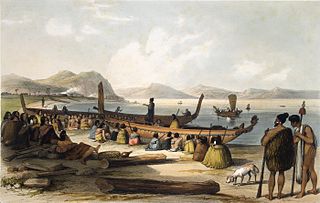
Waka are Māori watercraft, usually canoes ranging in size from small, unornamented canoes used for fishing and river travel, to large, decorated war canoes up to 40 metres long.
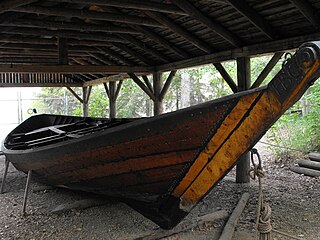
The York boat was a type of inland boat used by the Hudson's Bay Company to carry furs and trade goods along inland waterways in Rupert's Land, the watershed stretching from Hudson Bay to the eastern slopes of the Rocky Mountains. It was named after York Factory, the headquarters of the HBC, and modeled after the Orkney yole. Two variations to the York Boat were scows and "Sturgeon Heads."
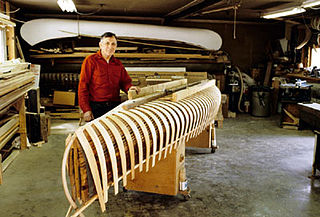
Joe Seliga was a master builder of wood-and-canvas canoes in Ely, Minnesota.
Penn Yan Boat Company, which produced a wide range of wooden and fiberglass powerboats, sailboats, canoes and rowboats, was founded in 1921 by German-native Charles A. Herrman. It derived its name from the location of its headquarters, Penn Yan, New York. At its founding, the company built wood boats and canoes, switching to all fiberglass production in the early 1960s. No records are known to survive.

Old Town Canoe Company is a historic maker of canoes in Old Town, Maine. The company had its beginnings in 1898, in buildings constructed in 1890 for a shoe business, and was incorporated in 1901. Old Town entered the canoe market as a builder of canvas-covered wooden canoes. In the latter half of the 20th century, the company adopted more modern materials to maintain competitiveness. The company's plant was located along the Penobscot River.

Chestnut Canoe Company was established in Fredericton in the Canadian province of New Brunswick at the end of the 19th century and became one of the pre-eminent producers of wood-and-canvas canoes. The company closed in 1979.
The E.M. White Canoe Company was founded by Edwin White, who produced wood and canvas canoes from 1889 into the 1940s. White is considered one of the pioneers of wood and canvas canoe building and one of several prominent canoe builders in Maine.

The B.N. Morris Canoe Company of Veazie, Maine, produced wood and canvas canoes from 1891 until fire destroyed the factory late in 1919. The shapeliness, style, and workmanship of the Morris canoes and boats made some of the most picturesque craft that were ever built with this construction form.
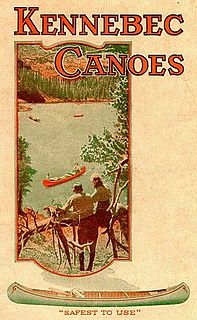
The Kennebec Boat and Canoe Company was located in Waterville, Maine. Established in 1909 by George F. Terry, the company manufactured wooden canoes and boats until 1941.

The Carleton Canoe Company of Old Town, Maine was one of the earliest producers of wood and canvas canoes. From the 1870s, Guy Carleton sold bateaux and birch bark canoes commercially and added a canvas-covered canoe to his product line in the 1880s. Carleton was acquired by Old Town Canoe in 1910, and continued to be offered as a separate entity until the 1940s.

The Haskell canoe was a boat built by the Haskell Boat Company in Ludington, Michigan. It was made with a single sheet of three-ply lightweight waterproof plywood. Peak production of the canoe occurred during the 1920s.






















